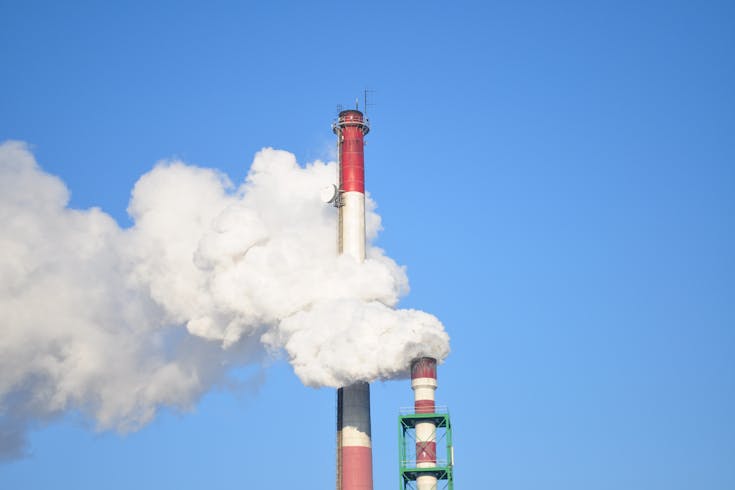Climate change is no longer a future concern—it is unfolding in real time. The rising global temperature, unpredictable weather patterns, and environmental disasters are clear indicators of a worsening climate crisis. In response to this, governments worldwide, including Indonesia, are taking significant steps to mitigate greenhouse gas (GHG) emissions. One of Indonesia’s key policies in this effort is the implementation of a carbon tax.
What is Carbon Tax?


A carbon tax is a levy imposed on the carbon content of fuels or activities that generate carbon emissions. The goal is to encourage businesses and individuals to reduce their carbon footprint, invest in cleaner energy sources, and contribute to overall environmental sustainability.
Also read: Tax Incentives in Indonesia: Key Benefits and Opportunities
Indonesia’s Commitment to Emission Reduction
Indonesia, as a signatory of the Paris Agreement 2015, has pledged to reduce GHG emissions. According to the Ministry of Environment and Forestry, the country aims to cut emissions by 31.89% with domestic efforts and up to 43.2% with international support by 2030. Additionally, Indonesia has accelerated its Net Zero Emission (NZE) target from 2070 to 2060.
However, Indonesia remains one of the world’s largest GHG emitters. The European Commission’s Emissions Database for Global Atmospheric Research (EDGAR) ranked Indonesia seventh among the top 11 GHG-emitting countries in 2022. To address this, the government is adopting various economic and regulatory instruments, including carbon taxation and an emission trading system.
Legal Framework for Carbon Tax in Indonesia
Indonesia’s carbon tax policy is legally grounded in Law No. 7 of 2021 on the Harmonization of Tax Regulations (UU HPP) and Presidential Regulation No. 98 of 2021 on the Implementation of Carbon Economic Value (NEK). These regulations provide a foundation for Indonesia’s carbon pricing mechanisms, including carbon trading and taxation.
Also read: Complete List of Industrial Estates in Indonesia
How Carbon Tax Works in Indonesia


Under Article 13 (8) and (9) of UU HPP, Indonesia’s carbon tax rate is determined based on the market price of carbon per kilogram of CO2 equivalent (CO2e). If the market price falls below IDR 30 per kilogram of CO2e, the minimum carbon tax will be set at IDR 30 per kilogram of CO2e.
The government has adopted a phased approach for carbon tax implementation:
- 2021: Development of carbon trading mechanisms.
- 2022-2024: Introduction of a cap-and-tax mechanism for coal-fired power plants (PLTU).
- 2025 onwards: Full implementation of carbon tax and expansion to other sectors.
Currently, 146 coal-fired power plants (PLTU) participate in Indonesia’s carbon trading program, with an expected gradual expansion to cover industries like manufacturing and transportation.
Challenges and Economic Impact
Although the carbon tax is a step towards sustainable economic transformation, its implementation presents challenges:
- Inflation Risks: Higher energy costs could lead to inflation. The Ministry of Finance is working on strategies to ensure a balanced approach.
- Industry Readiness: Many industries rely heavily on fossil fuels, requiring time and incentives to transition to renewable energy.
- Defining Carbon Economic Value (NEK): The government must develop an efficient methodology to calculate and regulate NEK through instruments like emission trading systems and crediting mechanisms.
Also read: Indonesia’s Special Economic Zones (SEZs): A Complete Guide
Projected Revenue and Environmental Benefits
A study by Pratama BA, Ramadhani MA, Lubis PM, and Firmansyah A estimates that Indonesia’s carbon tax could generate IDR 23.65 trillion in revenue by 2025. This revenue could be reinvested in renewable energy incentives and climate adaptation programs. Additionally, the tax is expected to reduce carbon emissions and promote green economic growth.
Government Perspectives on Carbon Tax Implementation
During the 2023 Carbon Policy Forum, Indonesia’s Deputy Minister of Finance, Suahasil Nazara, emphasized the importance of a gradual, well-planned implementation to ensure minimal economic disruption while achieving long-term sustainability goals.
The Deputy Minister of Finance also stated, “The carbon tax is one of the instruments to ensure the carbon market operates effectively. The framework we are building aims to provide businesses with viable options.”
Also read: Indonesia’s Positive Investment List: Opportunities for Investors
Indonesia’s carbon tax represents a crucial step in combating climate change and fostering economic transformation. While challenges remain, a well-implemented carbon tax policy can reduce GHG emissions, accelerate the adoption of renewable energy, and create a more sustainable future for Indonesia.
As the world moves towards a low-carbon economy, Indonesia’s proactive stance on fossil fuel taxation and carbon pricing will be instrumental in balancing economic growth with environmental responsibility.
If you need further explanation or require tax consultation for business in Indonesia, you can rely on InvestinAsia’s Indonesia tax consultant and compliance services.
Our experienced team of professionals is ready to assist you in every tax matter, such as:
- Accounting and tax reporting services in Indonesia
- Indonesia Payroll Service
- Indonesia LKPM Reporting Service
- Indonesia VAT Taxpayers Registration
Contact us now for FREE consultation and special package!
sources:



